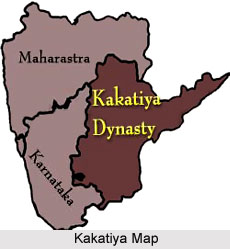As soon as the Kakatiyas of Andhra Pradesh were defeated in 1322 A.D., entire the Andhra was captured by the army of the Ghias-ud-din Tughlaq, ruler of Delhi. The Tughlaqs were tyrannical and autocratic in their governing. This oppression led to the formation of a coalition of Hindu rulers led by Prolaya Nayaka with the aim of freeing themselves from the Delhi yoke. The Nayaka chiefs, seventy-five in all, managed to drive out the Muhammadan invaders from the entire Andhra area and subsequently founded their own respective kingdoms. The most important among these were the Musunsuri chiefs of Warangal, Padmavelma of Rachakonda and the Reddis of Kondavidu.
 One among the Reddis of Kondavidu was Proyala Verna (1325-1353 A.D.) who initially ruled with Addanki as his capital which was later shifted to Kondavidu. Vema`s reign is chiefly known for the patronage he extended to poets and scholars who flocked to his court. He constructed a number of temples and tanks and granted villages to the Brahmins of his kingdom. He was succeeded by his son named Anavota (1354-1364 A.D.) who all through his reign, was actively engaged in fighting wars with the Bahmani kings, the Recherla chieftains and also the Vijayanagara monarchs. However, to his dismay, the Vijayanagara rulers managed to capture much of his territory.
One among the Reddis of Kondavidu was Proyala Verna (1325-1353 A.D.) who initially ruled with Addanki as his capital which was later shifted to Kondavidu. Vema`s reign is chiefly known for the patronage he extended to poets and scholars who flocked to his court. He constructed a number of temples and tanks and granted villages to the Brahmins of his kingdom. He was succeeded by his son named Anavota (1354-1364 A.D.) who all through his reign, was actively engaged in fighting wars with the Bahmani kings, the Recherla chieftains and also the Vijayanagara monarchs. However, to his dismay, the Vijayanagara rulers managed to capture much of his territory.
Proyala Verna`s younger brotherAnavema succeeded him in 1364 A.D. Anavema was a competent ruler who managed to recover most of the areas captured by the Vijayanagara kings and also defeated the Recherlas. He was succeeded in 1386 A.D. by Kumaragiri, his nephew, also a capable ruler. He had only one son who predeceased him and he subsequently nominated Kataya Verm, a brother-in-law as his successor. However, Peda Komati Vema, a distant relative of Prolaya Verna Reddi, defeated Kumaragiri who along with Kataya Verna sought refuge at Rajahmundri.
Peda Komati Verna who ruled from 1402-1420 A.D. was a dynamic general. Taking advantage of the civil war in Vijayanagar, he managed to recover many of the territories lost to the Vijayanagara kings previously. He was also a great scholar who authored many works in Telugu. He extended his patronage to the great poet, Srinatha who is considered as one of the greatest poets of Telugu literature.
The last ruler of Kondavidu was Racha Verna Reddi who succeeded Peda Komati and ruled for four years from 1420-1424 A.D. The Vijayanagara emperors from the south and the Gajapati kings of Kalinga in the north, who attacked the Reddi kingdom in his reign, brought about the end of this dynasty.



















